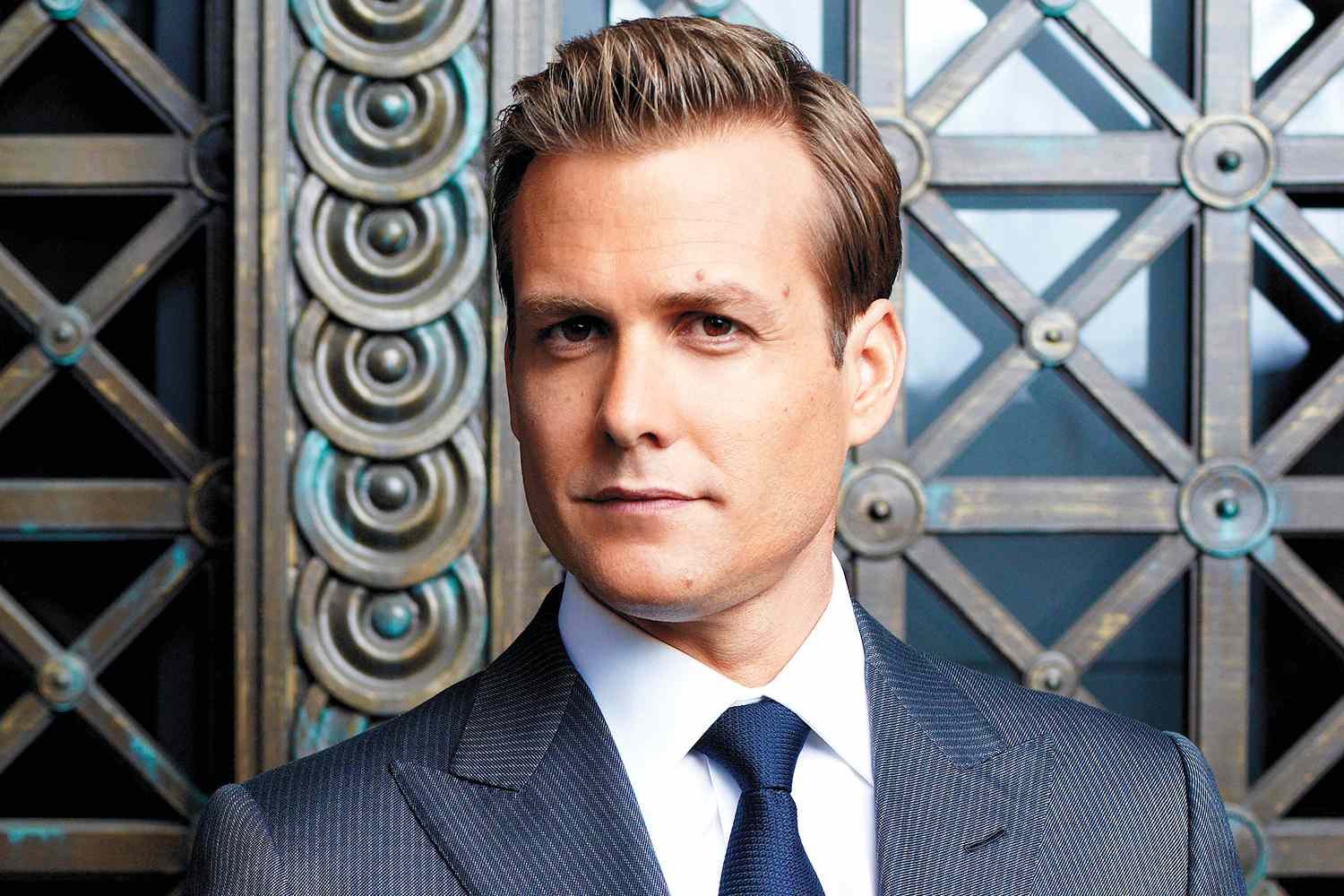Introduction
If Type Threes had a love language, it would be public recognition, followed closely by winning. These are the high-achievers, the polished presenters, the ones who can walk into a room and immediately sense who they need to be to succeed. Whether it’s adjusting their tone, posture, résumé, or wardrobe, Threes know how to read the vibe and rise to the occasion. They're magnetic, inspiring, and capable of making the impossible look effortless.
Threes are go-go-go types who live in fast-forward. Hustle isn’t just a lifestyle, it’s the air they breathe. They’re constantly scanning for the next milestone, the next accolade, the next upgrade in image or influence. Appearances matter… a lot. So does being admired. And yes, they can sometimes come off a little braggy. Not necessarily out of arrogance, but because somewhere along the way, they learned that success earns love, and image protects them from shame.
Chameleon-like, they shape-shift to win approval or avoid failure. Not because they’re fake, but because performance has become their safety blanket. Their sense of self-worth is often outsourced to applause, and slowing down can feel not just uncomfortable, but terrifying. Vulnerability? That’s risky. Feelings? Let’s circle back when the to-do list is finished (so... never).
But here’s the truth: Threes don’t need to earn their worth. The work isn’t to stop achieving altogether, it’s to remember they are valuable even when they’re not achieving. When Threes peel back the polish and let people see who they really are (messy emotions and all) they don’t lose their shine. They become truly luminous.
1. Center Of Intelligence: The Heart (Types 2, 3, 4) = Shame
[The Enneagram divides the nine types into three Centers of Intelligence: the Head, Heart, and Gut. Each center processes the world primarily through either thinking, feeling, or instinct.]
Heart types filter the world through emotion, relationships, and image. They take in the world through their feelings and focus on how others are responding to them, seeking affirmation, connection, or identity through those emotional cues. They’re often highly attuned to interpersonal dynamics and can read a room instantly.
The emotional struggle for this center is shame. A sense that they are not inherently worthy of love or belonging, and that they must earn it by being helpful (2), impressive (3), or unique (4).
If you’re a Type 2, 3, or 4, you likely spend a lot of time tuning into others’ feelings (and your own), navigating relationships, and wondering who you truly are beneath all the roles you play.
2. Core Motivation, Fear, and Desire
[These are the inner drivers behind the type’s behavior: the deep needs they’re trying to meet, the fears they avoid, and what they long for most.]
Key Motivation: To be affirmed, admired, and impressive. To feel worthwhile by accomplishing things and gaining recognition.
Core Fear: Being worthless or seen as a failure.
Core Desire: To feel valuable, capable, and worthy of love, especially through success.
Threes want to matter. They want to rise. But their challenge is this: when you’re constantly playing a role, it’s easy to forget who you actually are underneath the applause.
3. The Passion/Sin: Deceit
[This is the emotional habit or "core vice" of the type, the thing they fall into when they’re out of alignment with their true self.]
This one’s a little layered. Type 3s aren’t necessarily lying to you, they’re more likely lying to themselves. Deceit, for Threes, is about losing touch with who they are in the pursuit of who they think they need to be.
They believe they’ll only be loved or respected if they win, perform, or maintain the image. So they adapt, shift, and work tirelessly to succeed—but often at the cost of authenticity.
"I’ll become whatever version of myself you’ll applaud… but will I still recognize myself when the crowd leaves?"
4. Wings:
[Your “wings” are the two numbers on either side of your core type. Most people lean more toward one or the other, which flavors their personality.]
3w2 (“The Charmer”): Social, engaging, people-pleasing. This Three uses charm and likability to win approval, often blending ambition with warmth. May lean into service roles and leadership in community.
3w4 (“The Professional”): Polished, emotionally complex, and often more introspective. This Three can feel like a moody CEO. Deep, driven, and highly attuned to aesthetics, authenticity, and performance.
Each wing adjusts the strategy of success, either through relational magnetism or personal refinement.
6. Relational Stance: Aggressive (Assertive)
[Each Enneagram type belongs to one of three stances: strategies for how we move through the world and try to get our needs met. These stances describe habitual energy patterns, not just how you interact with others, but how you cope with stress, seek connection, and protect your sense of self.]
Stance: Aggressive (Assertive)
Type 3s share the Aggressive stance with 7s and 8s. These types move against people to get what they want, often bringing energy, momentum, and vision. Threes tend to be proactive and focused on results, but they may overlook emotional nuance in their drive.
Repressed Center: Feeling (a.k.a. Productive Feeling)
As members of the Heart Triad, Threes feel deeply, but their feelings often get bypassed in favor of productivity. Emotions are edited or delayed if they get in the way of the task at hand, and often result in taking action against sitting with them.
They may appear emotionally disconnected, not because they lack depth, but because they don’t slow down long enough to process honestly. Growth means learning to sit with real emotions, not just the curated ones.
7. Childhood Patterns
[This section highlights the unconscious messages each type internalized in childhood, both the false beliefs they absorbed and the healing truths they missed but longed to hear.]
Unconscious Childhood Message: “It’s not okay to have your own feelings or identity.”
Lost Childhood Message: “You are loved for who you are.”
Many Threes grew up in environments (whether explicitly or subtly) where love and attention were tied to performance. Maybe they were praised for accomplishments, being impressive, or “making the family proud.” Maybe they learned to read the room and shape-shift to keep the peace or win approval.
Over time, this can teach a child that who they are doesn’t matter as much as what they do. So they become the achievers, the golden children, the ones who don’t cause problems, but who silently wonder if they’re only lovable when they’re shining.
They learned to lead, to impress, to stand out. But often at the cost of knowing what they actually feel, want, or need.
The healing comes when they realize: they don’t have to earn love with effort. It’s already theirs.
8. Growth and Stress Arrows
In Growth (Type 6): Threes become more loyal, collaborative, and grounded. They connect with community, admit vulnerability, and start asking, “What’s best for the team?” instead of “How can I win?”
In Stress (Type 9): The drive fades. They may withdraw, procrastinate, numb out, or lose touch with their goals. This can signal deep burnout or fear of failure.
[The Enneagram symbol includes dynamic lines that show where each type tends to go under stress and where they go when growing. When stressed, a type may take on the less healthy traits of another number. In growth, they may adopt the healthier aspects of yet another. Understanding these arrows helps with intentional development.]
These arrows are powerful indicators: leaning into 6 brings balance and connection; slipping into 9 may point to a need for rest and reconnection with self.
8. Superpower
[Every Enneagram type brings a specific gift to the world. A unique strength that flows when they’re aligned and healthy. This isn’t just what they’re good at, it’s what makes them a necessary part of a thriving, balanced world.]
Drive & Influence – Threes know how to get things done and bring others along for the ride. Their combination of ambition, adaptability, and charisma makes them natural leaders, capable of motivating teams, launching big ideas, and turning dreams into reality. Many higher-ups in companies or corporations, salespeople, and influencers tend to be threes.
When they’re healthy and aligned with their true values (not just the image), Threes become deeply inspiring. They lead with heart, not just hustle. They show others what’s possible, not by pretending to be perfect, but by being real, resilient, and relentlessly human.
9. Common Challenges
[This section explores what tends to trip this type up: recurring emotional patterns, blind spots, and areas of struggle. These aren’t flaws, but rather predictable pitfalls that can become opportunities for growth with awareness and support.]
Threes are masters of momentum. But sometimes they don’t know how to stop. Their drive and adaptability can take them far, but it often comes at a cost. Here are a few patterns that tend to trip up Type 3s:
Over-identifying with success – Self-worth becomes performance-based. If they're not achieving, they may feel invisible or like they don’t exist.
Emotional bypassing – Feelings are seen as inefficient or inconvenient, especially if they might disrupt the image. Vulnerability gets shoved in a drawer marked “later.”
Chronic busyness – Rest feels unnatural unless it serves a purpose. Threes often struggle to slow down, and burnout can sneak up disguised as productivity.
Imposter syndrome – Because they’re constantly adapting, Threes may fear they don’t have a stable “real self.” Even after achieving, they can feel hollow inside.
Image obsession – There's a temptation to curate every part of life, from Instagram feeds to facial expressions. Authenticity can feel risky if it threatens admiration.
At their best, Threes learn to achieve from a grounded sense of identity, not as a means to earn love, but as an honest expression of who they are.
10. Subtypes
[This refers to your dominant instinct, self-preservation, social, or one-to-one (also called sexual), which shapes how your Enneagram type shows up in daily life. Each type can look quite different from each other. Each Enneagram type has an instinctual subtype that is often called the “countertype.” This version runs counter to the usual stereotype of the type, meaning it may express its core motivation in a less obvious or even contradictory way. Countertypes can make it harder to spot your number at first because they don’t always “look like” the textbook version — but the underlying motivation is still the same.]
Self-Preservation (The Worker): Quietly ambitious and focused on security. These Threes channel their energy into competence and efficiency. Less showy, more dependable and sometimes prone to overwork without recognition.
(Countertype)
Social (The Politician): Think power suit and networking brunch. This Three wants to be admired by the group, the system, the collective. Reputation is everything, and image management is part of the job.
One-to-One / Sexual (The Movie Star): Intense, seductive, and image-focused. This Three aims to be desirable and emotionally captivating, often tying their worth to how captivating or unique they appear in intimate connections.
11. Emotional, Energy, and Communication Style
[This section explores what tends to trip this type up: recurring emotional patterns, blind spots, and areas of struggle. These aren’t flaws, but rather predictable pitfalls that can become opportunities for growth with awareness and support.]
Emotional Style: Curated, contained, image-aware. Threes often feel deeply but don’t always show it. Vulnerability may feel risky or inefficient, so emotions get edited for the sake of success or control.
Energy: Driven, polished, high-output. Threes move quickly with purpose and presence. They often feel like they’re “on” even when they’re exhausted. Rest can feel unnatural unless it serves a goal.
Communication Style: Persuasive, goal-oriented, and sometimes a little performative. Threes speak to impress or influence, often using motivational language or charm. They may downplay negative emotions and pivot toward “the win.”
12. Therapy Perspective
[Practical notes from a therapist’s point of view: what this type might need in counseling and what healing often looks like. This is where you’ll find tips, reminders, and patterns that tend to emerge when this type is doing inner work.]
In my experience, Threes don’t always seek out therapy unless something disrupts the rhythm of their success. Burnout, a relationship rupture, or a quiet sense that the mask is slipping. When they do show up, they’re often polished and prepared. They may look put-together, speak articulately, and bring the same drive to therapy that they bring to everything else: “Tell me how to fix it, and I’ll master it.”
Feelings, however, can feel inefficient, especially the messy ones. Threes often lean into intellectualizing or presenting their struggles with a polished sheen, sometimes even highlighting their accomplishments as a way to orient the room. This isn’t manipulation, it’s protection. The same impulse that helps them succeed in the outside world can make it hard to access their inner one.
That’s why therapeutic presence matters. The therapist’s role is to stay grounded, friendly but not swept up in the shine. Threes may struggle to let their guard down, so we look for the moments that feel real and raw, even if fleeting. That’s where the work begins.
Also worth noting: being comfortable with silence can be a powerful tool. Threes are used to filling space, controlling the tempo, and keeping the rhythm going. Thoughtful pauses and gently held quiet moments can interrupt the performance loop and invite something more vulnerable to surface.
What helps:
A safe space to explore identity apart from achievement
Building an emotional vocabulary that goes beyond “fine” and “productive”
Reflective, non-performative work that prioritizes truth over polish
Encouragement to rest, slow down, and connect without needing to earn it
Spacious silence, held with care, to make room for feelings that don’t come in with fanfare
Threes don’t need fixing, they need space to remember who they are underneath the striving. And when they find that space, real transformation begins.
12. Pop Culture Examples (hypothetical)
[Real and fictional people who are widely considered to represent this Enneagram type. These examples help ground abstract concepts in relatable characters and show how the type can manifest in very different lives.]









Real People:
Jennifer Lopez – A multi-hyphenate icon who embodies the relentless hustle, transformation, and marketability of a high-functioning 3. She’s always one step ahead.
The Rock (Dwayne Johnson) – From wrestling to acting to lifestyle branding, he’s a charisma machine with a motivational edge. Influence is his middle name.
Beyoncé – Meticulous, driven, and in full control of her brand and image. Her work ethic is legendary, but there’s vulnerability in her storytelling, too. A Three in full formation.
Taylor Swift – Re-inventor extraordinaire. Her eras are textbook Three: each carefully constructed to impress, connect, and maintain cultural relevance while still telling her personal story.
Tom Brady – Competitive, laser-focused, and hungry for legacy. He’s not here for average, he’s here to win, and to be known for it.
Fictional Characters:
Tony Stark (Iron Man, Marvel) – Flashy genius who covers insecurity with sarcasm and suits. His transformation arc is a classic Type 3 evolution: from performative ego to vulnerable authenticity.
Elle Woods (Legally Blonde) – Initially underestimated, but never underprepared. She channels charm and drive to prove herself, discovering along the way that she doesn’t need to become someone else to succeed.
Moira Rose (Schitt’s Creek) – Dramatic, curated, and always on-brand, even in exile. She lives in the performance, but shows us glimpses of the fear behind the fabulous.
Don Draper (Mad Men) – Image is everything, and behind the mask? A man who doesn’t quite know who he is. Possibly the most tragic Three of all.
Harvey Specter (Suits) – Confident, driven, emotionally avoidant. Hates losing, hates weakness, and only shows softness when the mask slips (usually at 2 a.m., over scotch).
Path to Growth: So, Now What?
What Growth Means for Type 3
Growth for Threes means stepping out from behind the performance, image, and constant striving, and reconnecting with who they truly are beneath the accolades. It’s about being more than what they do or how they’re seen. Real growth is about embracing authenticity, vulnerability, and cultivating value from inside, not just what is visible to others.
Early Signs of Growth
Being honest about what one really feels and wants (not just what will impress or be rewarded).
Experiencing discomfort when not “performing” and still staying present instead of covering up.
Slowing down: allowing rest, reflection, or non-productive time without guilt.
Prioritizing cooperation, meaningful connection, or serving something beyond personal advancement.
Noticing when success or image is driving decisions, and choosing otherwise sometimes.
Practices that Support Growth
Truth-telling in safe contexts: journaling, therapy, or conversations where you express emotions and needs, even if you feel they might lower your image.
Reflective exercises to identify your core values (beyond what you think you “should” value) and check how aligned your life is with them.
Rest and recharge routines: intentionally scheduling downtime, not as a reward but as essential to being.
Engaging in collaborative projects or service outside of one’s own goals, things done for the communal good, without the goal of recognition.
Mindfulness or presence practices to reconnect with internal experience (body, emotions, intuition), not just outward goal‐orientations.
Feedback work: asking trusted people how authentic you seem, where you come across as more “image” than substance, and listening.
What Mature Growth Looks Like
A Three who remains ambitious and competent, yet also deeply grounded in their true self, not just their public persona.
Someone who can share both wins and vulnerabilities, successes and failures, with humility and authenticity.
They can slow down and enjoy life without achieving, without always having something to prove, and still feel valuable.
Relationships become more genuine: they care about others’ needs not as steps in a ladder, but as part of a real connection.
They contribute in ways that reflect their inner values, not just what brings prestige or admiration.
Success is defined more by inner satisfaction, integrity, and positive impact than by external markers alone.
Watch Out For…
“False growth” trap: adopting appearances of humility or service just to look good, rather than from genuine connection with those values.
Overcorrection: rejecting ambition or achievement altogether in reaction to being too performance-oriented, which may create its own imbalance.
Using activity and busyness to avoid deeper feelings of worthlessness or fear of failure.
Equating self‐worth with external results, approval, or visible success.
Losing touch with emotional life (denying feelings, avoiding vulnerability) because those feelings feel risky to image.
Encouragement for the Journey
Growth for Type Three is especially challenging because so much of their life has been built around being seen, being admired, and achieving. But every step toward authenticity, speaking truth, slowing down, and embracing vulnerability strengthens the roots of their worth. Even “failures,” rest, slowing down, and small moments of honesty are not setbacks, they are essential parts of real growth. Over time, as the image and the doing become less compulsive, there is more peace, more connection, deeper meaning.
Bonus! The Quinessential Type Three Playlist
I scoured the internet, fan forums, and my own late-night feels to curate songs that capture the emotional world of a true Type Three. Whether you're deep in your feels, hyping yourself up, or trying to figure yourself out, this playlist is for you.
10. Journal Prompts
Who am I when I’m not performing or succeeding?
What would I do or be if I didn’t care about how it looked to others?
What do I believe gives me worth?
Where do I feel the need to be “the best” and what would happen if I wasn’t?
When do I feel most loved without earning it?
What emotions have I been avoiding for the sake of achievement?
11. Final Encouragement
Dear Three, You don’t have to keep proving your worth. You are not a résumé. You are not a brand. You are not just the highlight reel or the polished performance. You are a living, breathing human being, and your value is not up for debate.
You’ve spent so much of your life striving: to impress, to accomplish, to be everything to everyone. And you’ve probably gotten a lot of praise for it. But underneath the gold stars and success stories, there’s a part of you that wonders, Would they still love me if I stopped achieving? If I dropped the act?
Here’s the answer: Yes. You are worthy of love, rest, softness, and imperfection. Please hear me when I say: You are actually limiting all those goals, and that potential you’ve got by NOT being authentic and raw.
You don’t need to hustle for belonging. You don’t need to earn your seat at the table. You already belong, before the project is finished, before the makeup is done, before the inbox is cleared.
You already shine. Not because you perform, but because you exist.
And when you begin to believe that? That’s when your truest power begins
Type 3 Mantra
Use this to ground yourself in who you are, not just what you do.









